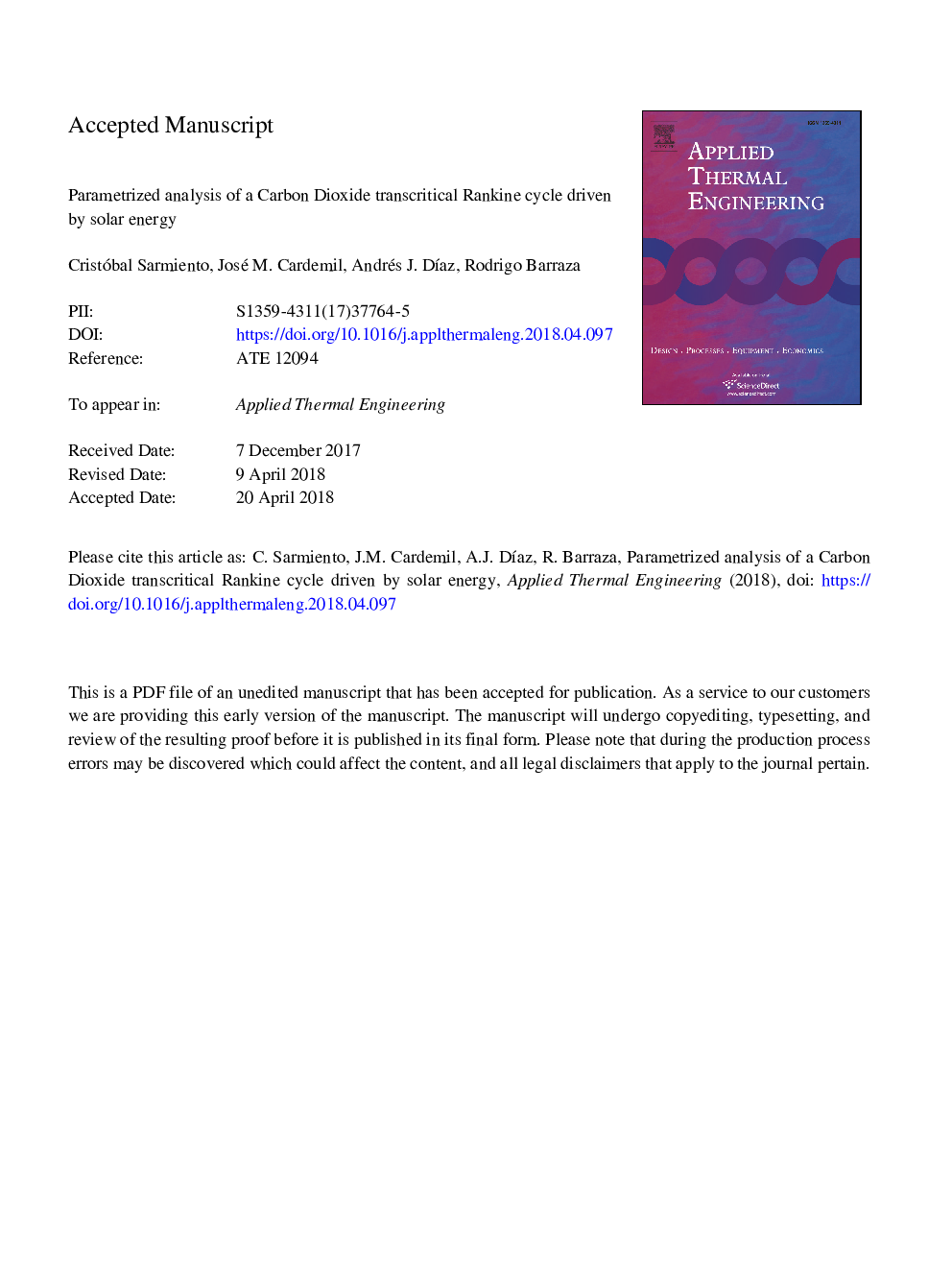| Article ID | Journal | Published Year | Pages | File Type |
|---|---|---|---|---|
| 7045128 | Applied Thermal Engineering | 2018 | 33 Pages |
Abstract
Several authors have reported in the literature the benefits of transcritical carbon dioxide regenerative Rankine power cycles using low - and medium - temperature sources. However, their technical potential when driven by solar-thermal collectors has not been fully addressed yet. The methodology presented herein is based on two parametric analyses: the first approach attempts to determine the heat transfer area of the regenerator and its respective cost, and the second approach studies the radial heat transfer in each solar collector, at different operation pressures, aiming to determine the heat losses, the pressure drop and the overall performance of the collectors with the use of supercritical Carbon Dioxide. Therefore, through this analysis, the total area required by each component is determined. Then, the solar field configuration is optimized to maximize the exergy efficiency. In that sense, by considering the differences of the specific costs for each area, a multi-objective optimization methodology is applied to the cycle, which determines the best configuration and operation pressure for the cycle based on exergy destruction minimization and the minimum thermoeconomic cost. These results allow determining an optimum size design for the regenerator and solar field configuration, which takes full advantage of the available energy at the lowest possible cost.
Related Topics
Physical Sciences and Engineering
Chemical Engineering
Fluid Flow and Transfer Processes
Authors
Cristóbal Sarmiento, José M. Cardemil, Andrés J. DÃaz, Rodrigo Barraza,
